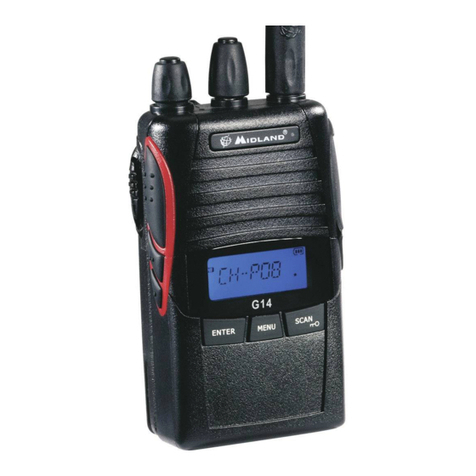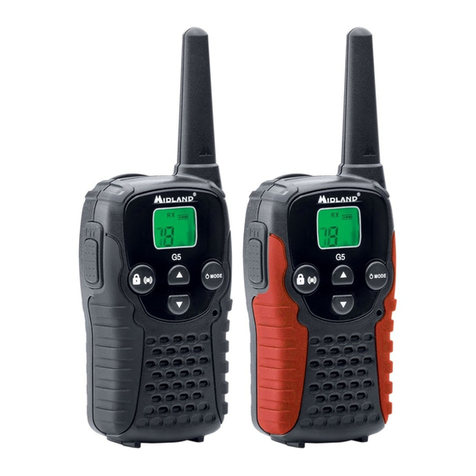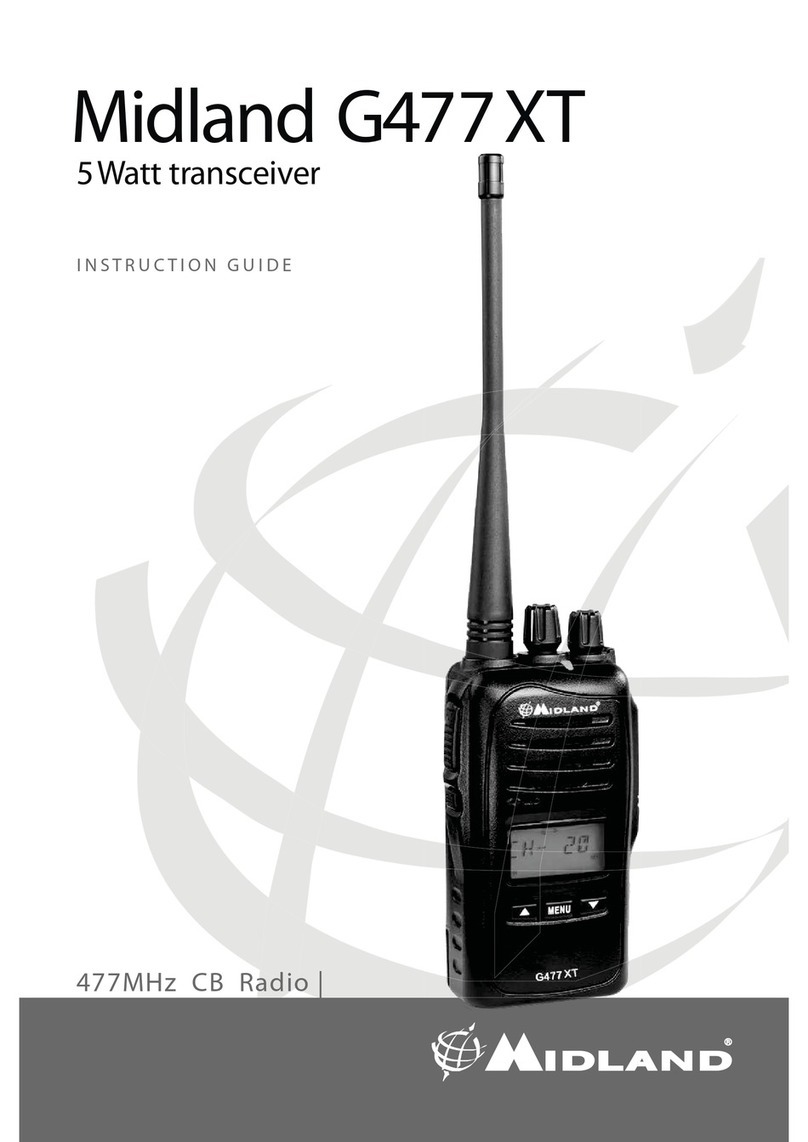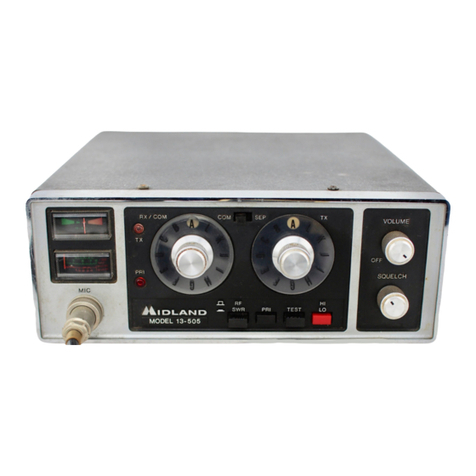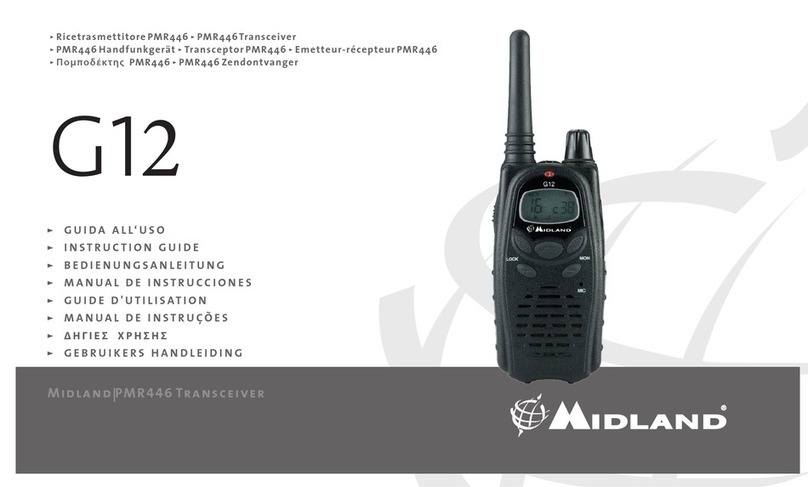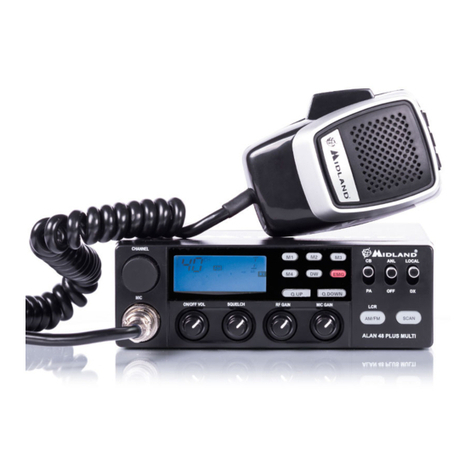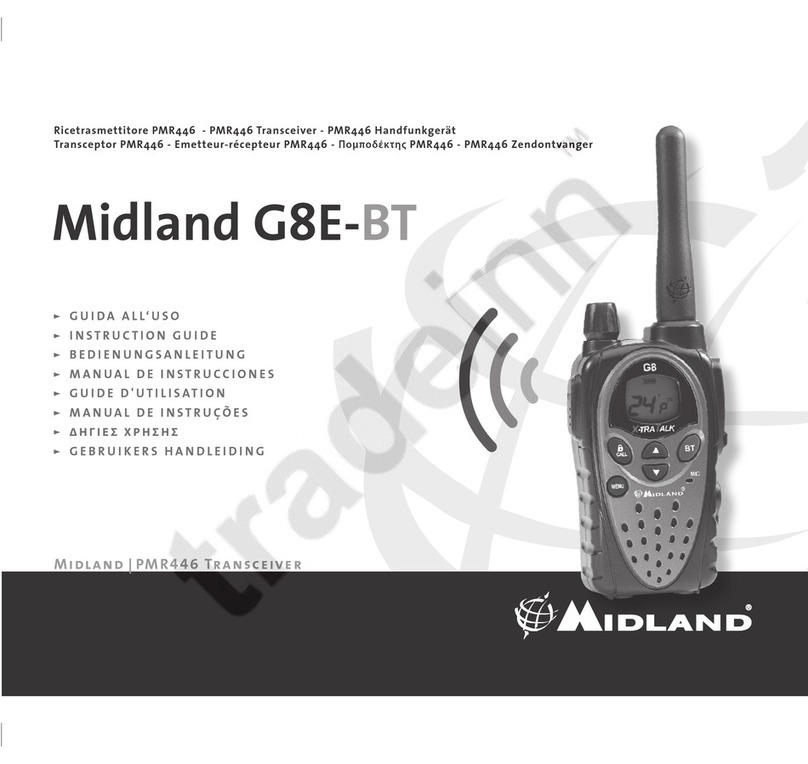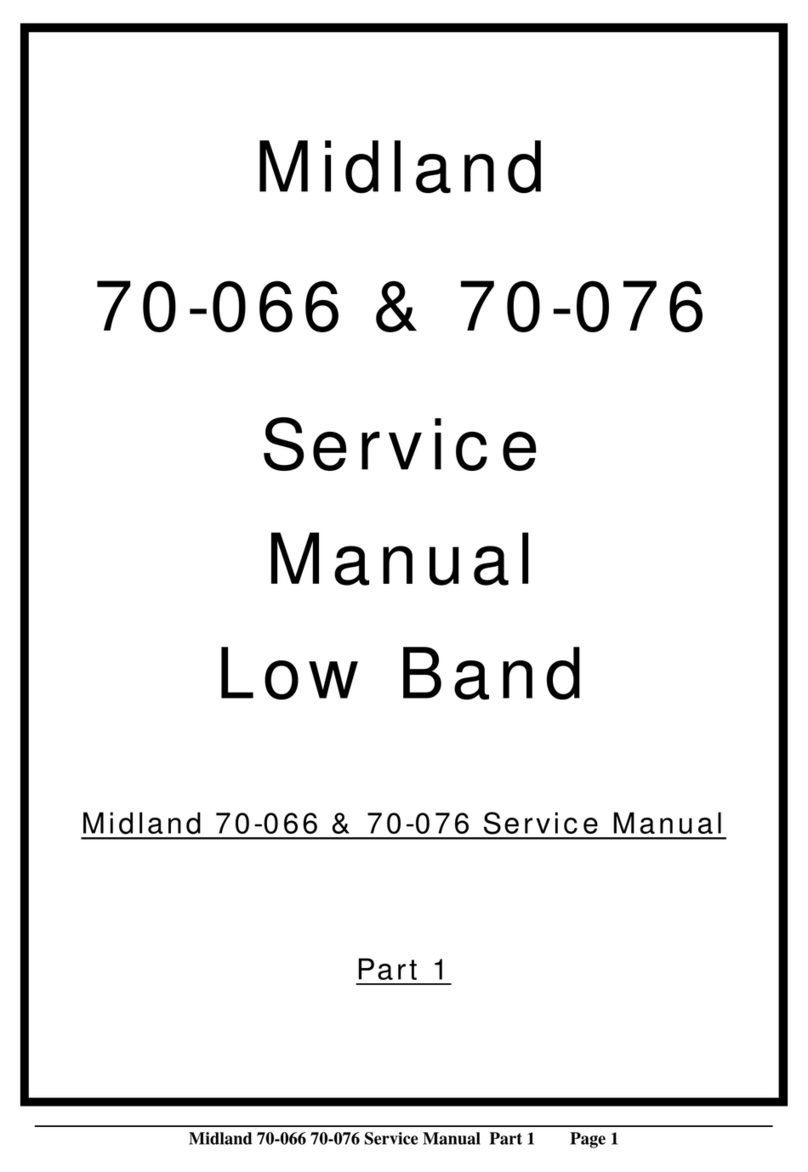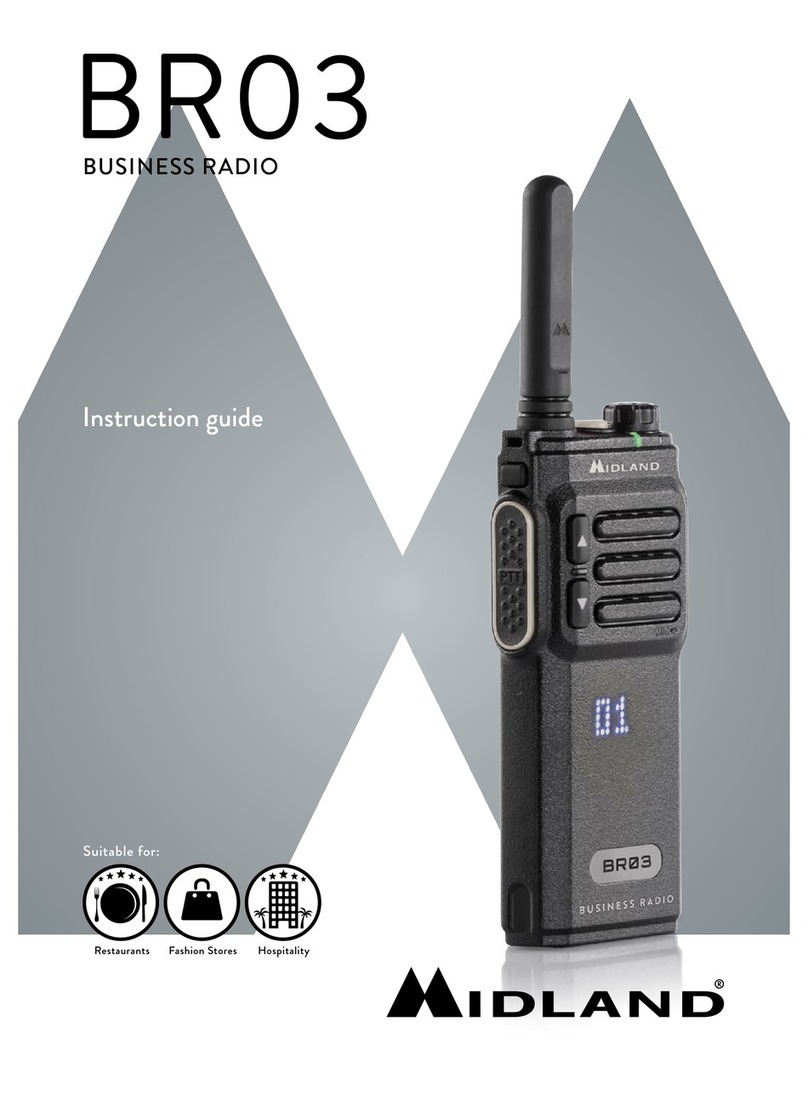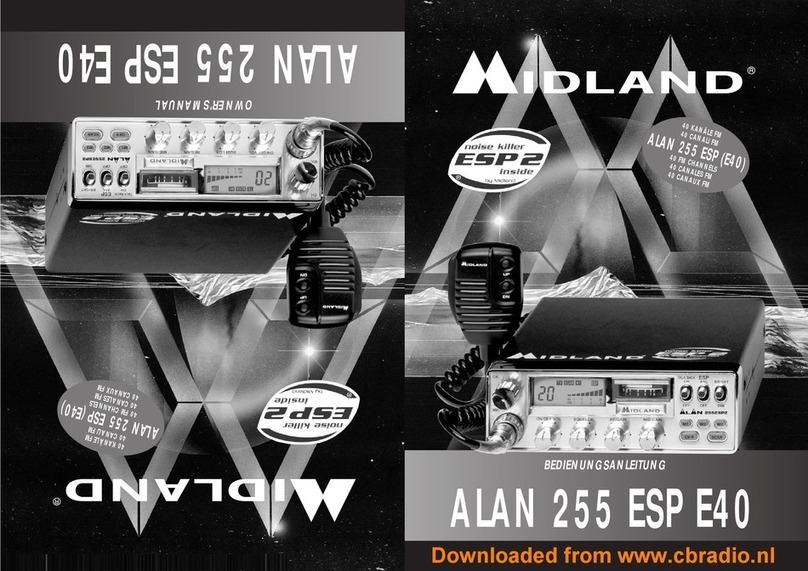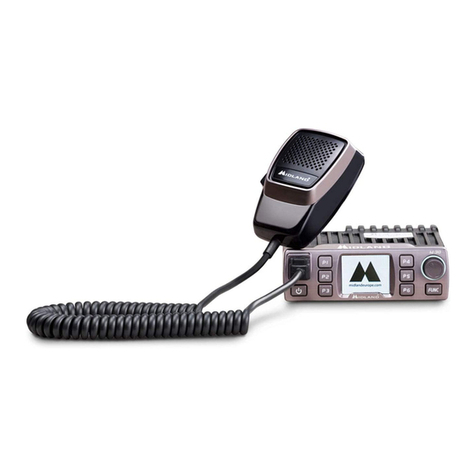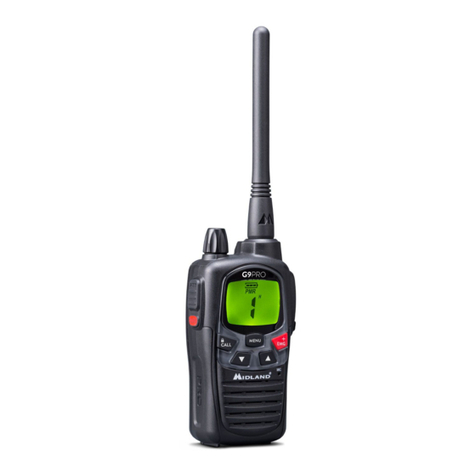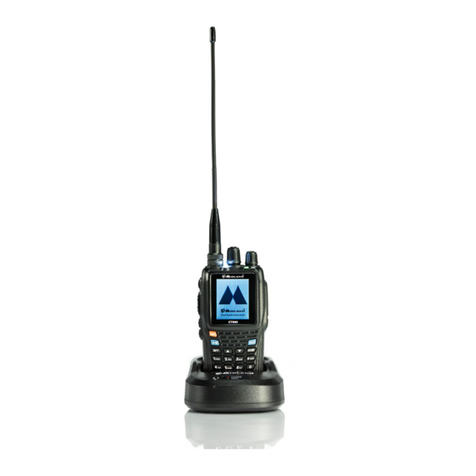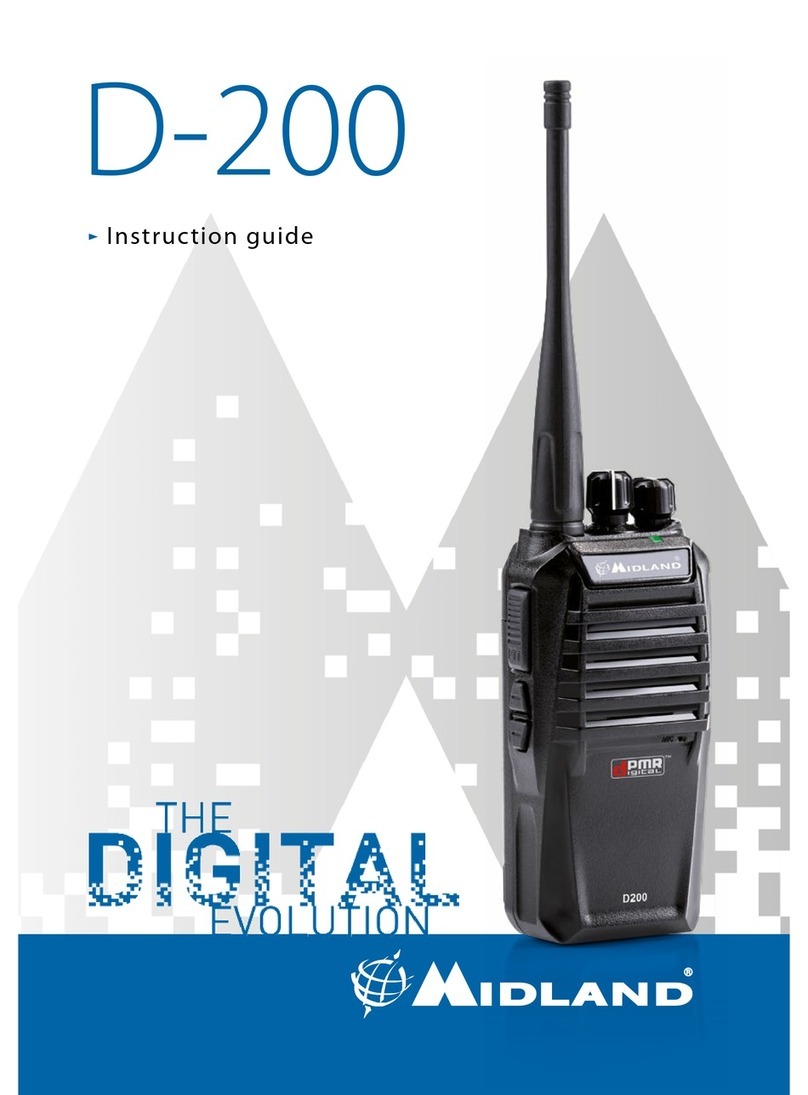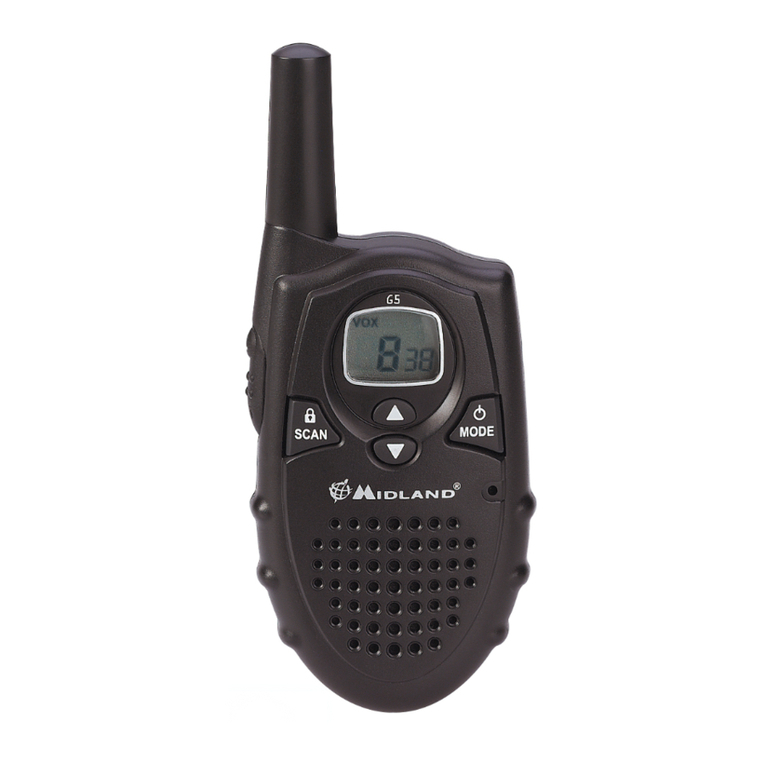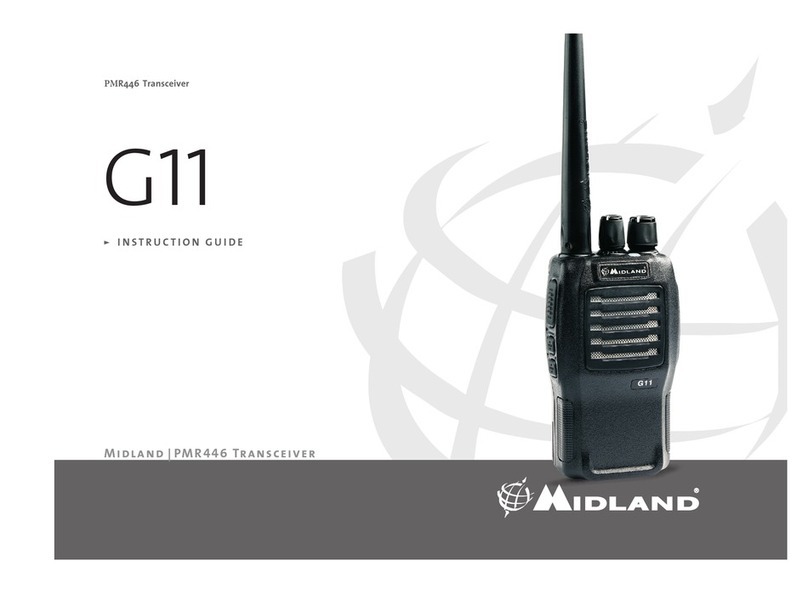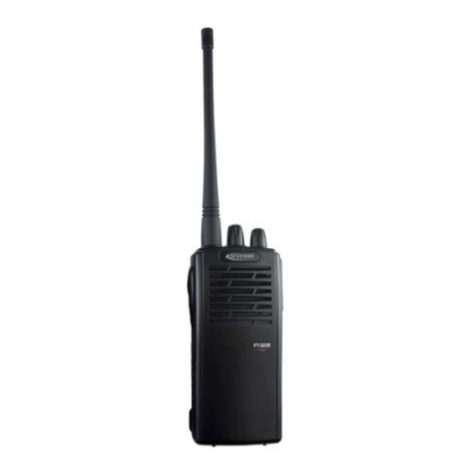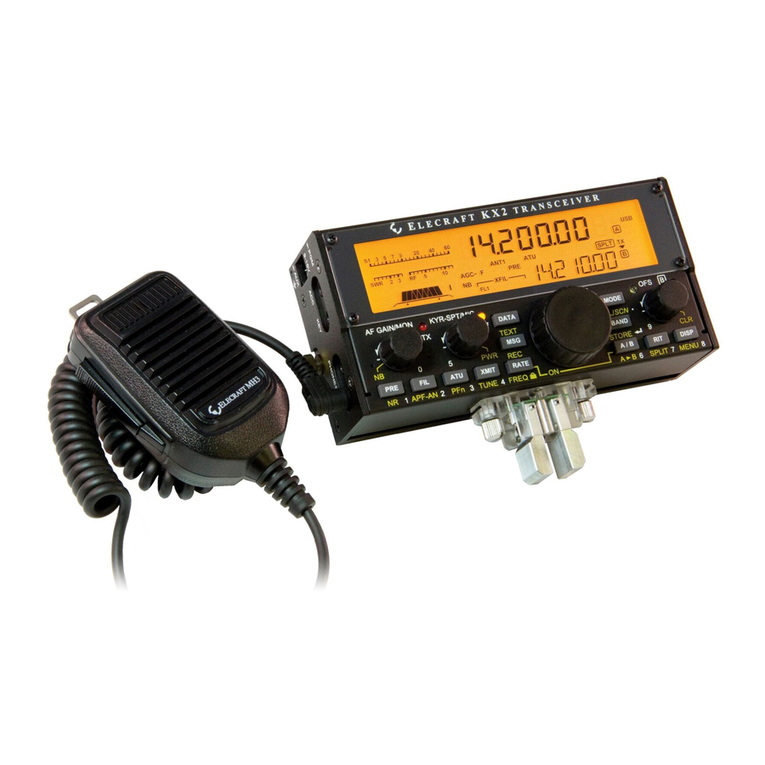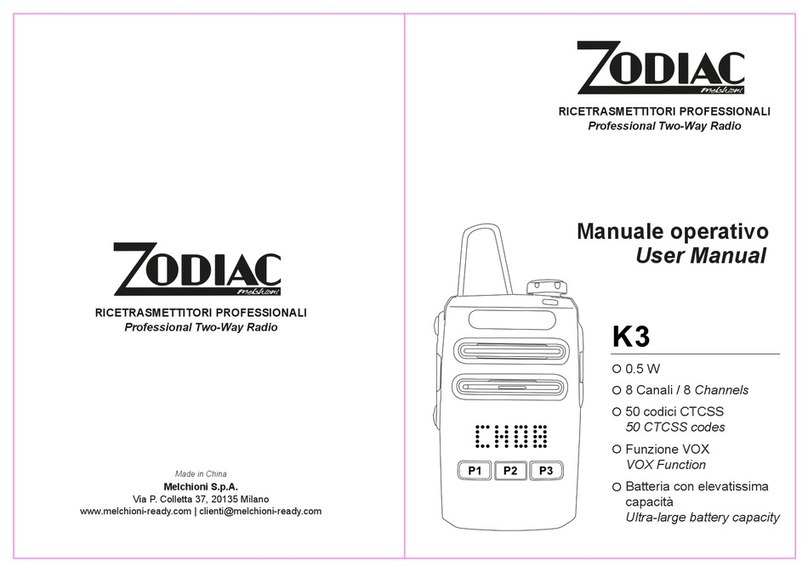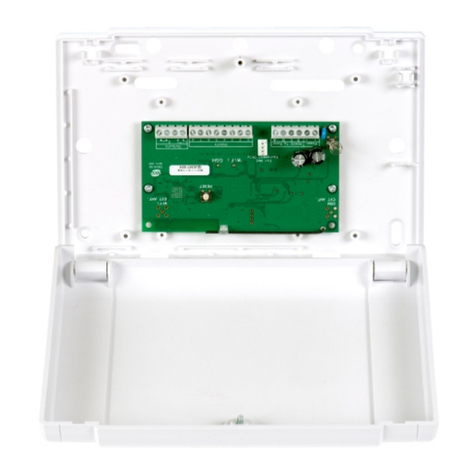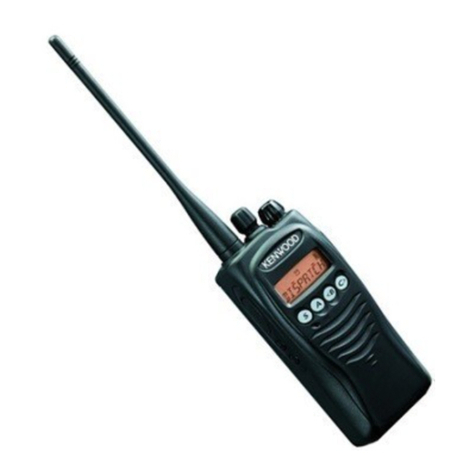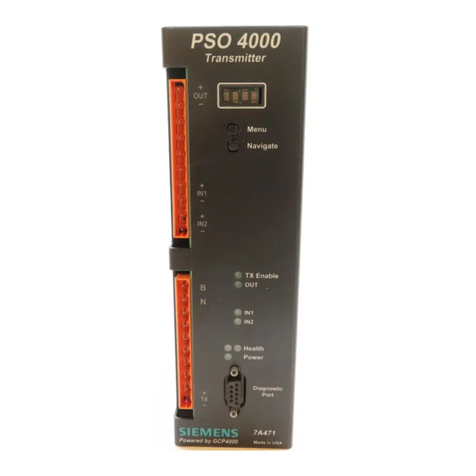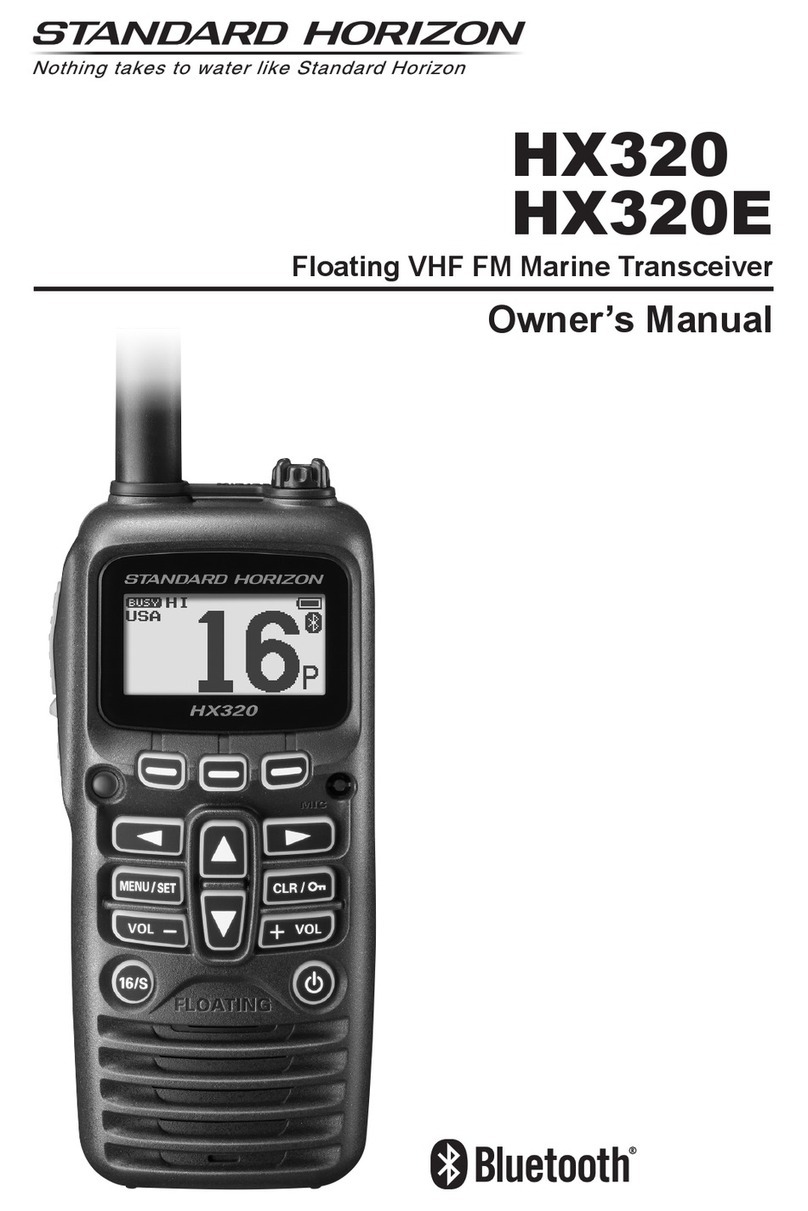3
I tasti di memorizzazione canali hanno una doppia funzione; qui di seguito
sono descritte le 2 modalità di funzionamento.
9. Pulsante“M1 - EMG”
Permette di memorizzare la memoria numero 1 e di richiamare i canali
di emergenza. La pressione del tasto “M1/EMG” seleziona ciclicamente il
canale 9, 19 ed il canale in uso.
10. Pulsante “M2 - DW”
Permette la memorizzazione della memoria numero 2 e l’attivazione della
funzione DUAL WATCH, che consiste nel rimanere sintonizzati contempora-
neamente su due canali a scelta dell’utente.
Con tale funzione si monitorizzerà ciclicamente un secondo canale. In
presenza di un segnale sul secondo canale, la conversazione sul canale
prescelto si interromperà e il ricevitore commuterà automaticamente sul
secondo canale. Il monitoraggio riprenderà dopo 5 secondi dal cessare del
segnale.
Per attivare questa funzione, operare come segue:
- Selezionare il canale desiderato mediante il selettore canali o i tasti
“UP/DN” sul microfono;
- Premere il tasto “DW” per circa 3 secondi: la radio emetterà un “BIP” e
sul display lampeggerà la scritta“DW”.
- Selezionare il secondo canale desiderato tramite il selettore canali o i
tasti “UP/DN” sul microfono;
- Premere nuovamente il tasto“DW”per 3 secondi circa: la radio emette-
rà un ‘BIP’, il display mostrerà la scritta “DW” permanente e visualizzerà
alternativamente i due canali selezionati.
11. Pulsante“M3 - SCAN”
Tramite questo tasto, si memorizza la memoria numero 3 e si attiva la fun-
zione “SCAN” (ricerca automatica di un canale occupato).
Per attivare questa funzione, operare come segue:
- selezionare un canale libero e ruotare la manopola dello squelch in
senso orario in modo che il rumore di fondo scompaia;
- premere il tasto “M3/SCAN”: il display mostrerà la scritta “SCAN” ed il
ricetrasmettitore scansionerà automaticamente e ripetutamente tutti
i canali fino a quando non troverà un canale in uso.
La funzione“SCAN”può essere annullata in tre modi: premendo il tasto
PTT, ruotando il selettore canali o premendo un qualsiasi tasto.
12. Pulsante “M4/LCR - AM/FM”
Questo tasto, permette la memorizzazione della memoria numero 4 e la
selezione del modo operativo (AM/FM). Modo AM: spia 5 di colore verde;
Modo FM: spia 5 di colore rosso. Se inoltre si seleziona una banda di fre-
quenza che opera solamente la modalità FM, il tasto “AM/FM” attiva la
funzione LCR (richiamo ultimo canale utilizzato).
13. Pulsante “M5 - LOCK”
Permette di memorizzare la memoria numero 5 e di attivare la funzione
“LOCK” (blocco tastiera, selettore canali e tasti “UP/DOWN” del microfono
per evitare accidentali pressioni dei tasti).
14. Tasto “N.K.”
Tasto di attivazione del soppressore dinamico dei disturbi (Vedi introduzio-
ne).
15. Manopola “MIC”
L’amplificazione della voce in trasmissione va regolata tramite questa
manopola. Il livello ottimale della modulazione va ricercato chieden-
do conferma a chi riceve la trasmissione.
16. Manopola “RF”
Controllo della sensibilità in ricezione. Ruotando la manopola in senso ora-
rio, si ottiene un aumento della sensibilità; ruotandola in senso antiorario,
si ottiene una diminuzione della sensibilità.
17. Manopola “VOL”
Questa manopola permette l’accensione dell’apparecchio e la regolazione
del volume al livello desiderato.
18. Manopola “SQ”
Permette la regolazione del livello di soglia della ricezione. Per la massima
sensibilità del ricevitore, é preferibile che il comando sia regolato solo al
preciso livello dove il rumore di fondo del ricevitore viene eliminato.
